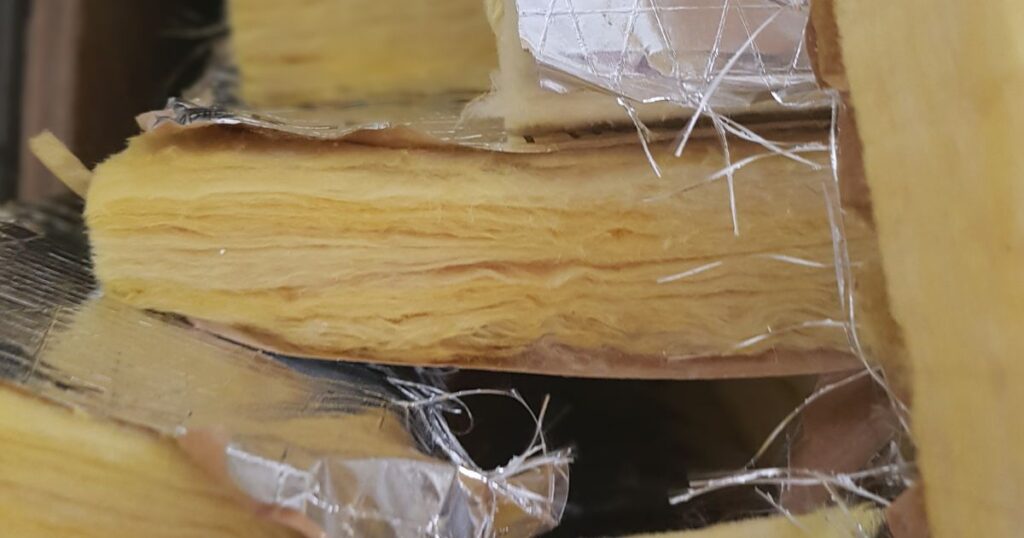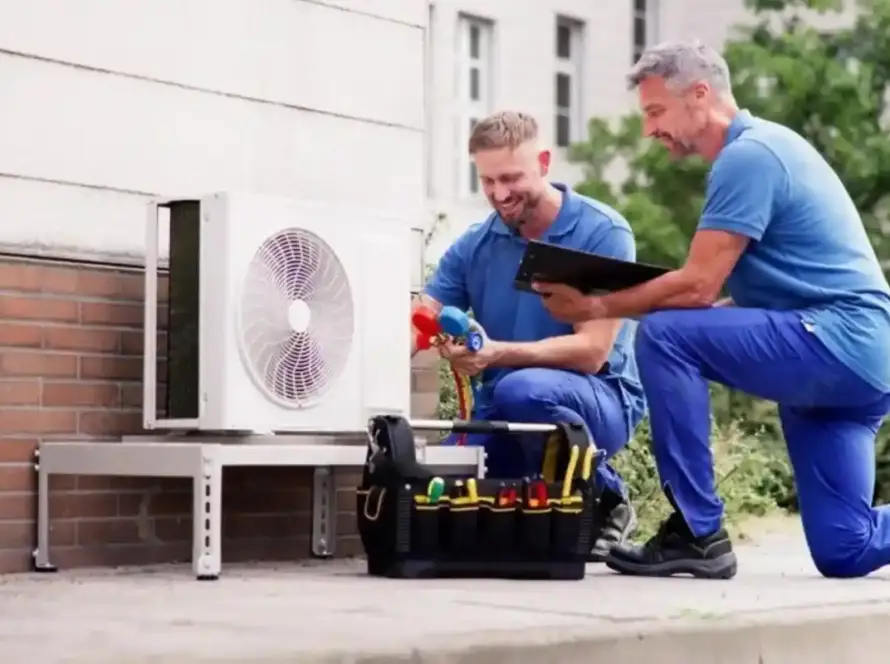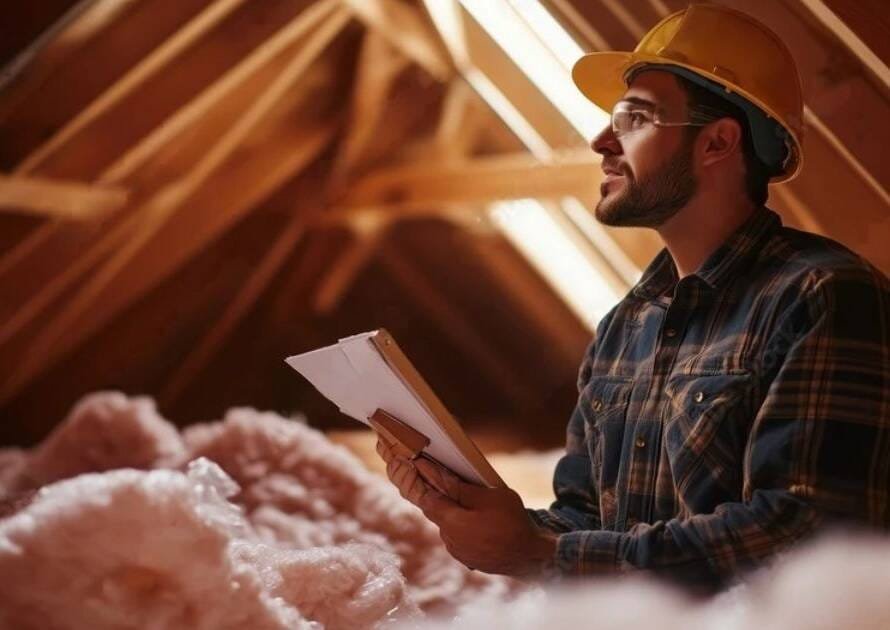The often-overlooked space above our heads plays a crucial role in our home’s overall performance. Proper attic insulation is not just a minor home improvement task; it’s a vital component in creating an energy-efficient, comfortable, and cost-effective living environment.
Many homeowners underestimate the importance of attic insulation, but its impact on daily life cannot be overstated. A well-insulated attic acts as a barrier, regulating the temperature exchange between your living spaces and the outside world. This regulation is essential in maintaining a consistent indoor climate, regardless of the weather conditions outside.
The benefits of maintaining proper attic insulation extend far beyond mere comfort. Let’s explore some of the key advantages:
- Energy Efficiency: A properly insulated attic significantly reduces the workload on your heating and cooling systems. By minimizing heat loss in winter and heat gain in summer, your HVAC system operates more efficiently, consuming less energy to maintain your desired indoor temperature.
- Cost Savings: The improved energy efficiency directly translates to lower utility bills. While the initial investment in quality attic insulation might seem substantial, the long-term savings on energy costs make it a wise financial decision. Many homeowners report noticeable reductions in their monthly energy expenses after upgrading their attic insulation.
- Enhanced Comfort: A well-insulated attic contributes to a more stable and comfortable indoor environment. It helps eliminate cold spots in winter and hot, stuffy rooms in summer, ensuring a consistent temperature throughout your home. This improved thermal comfort can significantly enhance your quality of life, making your living spaces more enjoyable year-round.
By understanding and acting on the importance of attic insulation, homeowners can create a more efficient, economical, and comfortable living space.
Regular Inspection

Maintaining the effectiveness of your attic insulation requires vigilance and routine checks. Regular inspections can help identify issues early, preventing minor problems from escalating into major concerns that compromise your home’s energy efficiency and comfort.
Recommended inspection intervals: To ensure your attic insulation remains in top condition, it’s advisable to conduct inspections at least once a year. However, for optimal maintenance, consider inspecting your attic insulation twice annually:
- In early fall, before the heating season begins
- In late spring, before the cooling season starts
These strategic timings allow you to address any issues before extreme temperatures set in, ensuring your home is prepared for the demands of each season.
Signs that indicate the need for an inspection: While adhering to a regular inspection schedule is crucial, certain circumstances may warrant additional checks:
- After severe weather events (heavy storms, high winds, or hail)
- Following any roof repairs or replacements
- If you notice a sudden increase in energy bills
- When you observe changes in indoor comfort levels
- If you hear unusual noises from the attic, possibly indicating pest activity
During your inspection, pay close attention to the following aspects:
Visible damage (tears, holes, dampness):
- Check for any obvious tears or holes in the insulation material
- Look for wet or damp areas, which could indicate roof leaks or condensation issues
- Observe any discoloration, which might suggest water damage or mold growth
Signs of pest infestation:
- Look for droppings, nests, or other evidence of rodents or insects
- Check for chewed insulation or wiring, which could indicate rodent activity
- Listen for any unusual sounds that might suggest the presence of pests
Settling or compression of insulation material:
- Measure the depth of the insulation to ensure it meets recommended levels for your region
- Look for areas where insulation has shifted or become unevenly distributed
- Check for compression, especially in areas with foot traffic or storage items
Remember, proper safety precautions are essential when inspecting your attic. Always use appropriate protective gear, ensure adequate lighting, and be cautious of potential hazards such as exposed nails or weak flooring.
By conducting thorough and regular inspections, you can maintain the efficiency of your attic insulation, address potential issues promptly, and ensure your home remains comfortable and energy-efficient year-round.
Addressing Moisture Issues

Moisture is one of the most significant threats to the effectiveness and longevity of attic insulation. Unchecked moisture can lead to a host of problems, including reduced insulation efficiency, structural damage, and health hazards. Identifying and addressing moisture issues promptly is crucial for maintaining a healthy, energy-efficient home.
Common sources of moisture:
- Leaks:
- Roof leaks due to damaged shingles, flashing, or ice dams
- Plumbing leaks from pipes running through the attic
- Leaks around chimneys, vents, or skylights
- Condensation:
- Occurs when warm, moist air meets cold surfaces in the attic
- Often results from improper ventilation or air sealing
- Can be exacerbated by household activities like cooking, showering, or drying laundry
Signs of moisture damage:
- Mold and mildew growth, often appearing as dark spots or patches
- Musty odors in the attic or upper floors of the home
- Wet or damp insulation materials
- Water stains on attic floors, walls, or ceilings below the attic
- Peeling paint or wallpaper on top-floor ceilings or walls
- Warped or rotting wood in attic structures
- Sealing leaks and cracks:
- Repair or replace damaged roofing materials
- Seal gaps around chimneys, vents, and other roof penetrations
- Fix any plumbing leaks promptly
- Use appropriate caulking or foam sealants to close small gaps and cracks
- Ensuring proper ventilation:
- Install or maintain soffit vents to allow fresh air intake
- Use ridge vents or other exhaust vents to allow moist air to escape
- Ensure a balanced ventilation system with proper intake and exhaust ratios
- Consider installing attic fans to improve air circulation, especially in hot climates
- Using vapor barriers:
- Install a vapor barrier on the warm side of the insulation (typically the side facing the living space)
- Choose the appropriate type of vapor barrier based on your climate and existing insulation
- Ensure the vapor barrier is properly sealed to prevent moisture intrusion
- In some cases, consider using vapor-retardant insulation materials
Additional moisture control measures:
- Ensure bathroom and kitchen exhaust fans vent directly to the outside, not into the attic
- Maintain gutters and downspouts to direct water away from the foundation
- Grade the soil around your home to slope away from the foundation
- In humid climates, consider using a dehumidifier in the attic during particularly damp seasons
By effectively addressing moisture issues, you not only protect your attic insulation but also safeguard your home’s structural integrity and indoor air quality. Regular inspections and prompt action on any signs of moisture can prevent small problems from becoming major, costly issues. Remember, if you’re unsure about handling moisture problems or encounter extensive damage, it’s best to consult with a professional contractor or insulation specialist.
Pest Control

Pests can wreak havoc on attic insulation, compromising its effectiveness and potentially causing health hazards. Effective pest control is essential for maintaining the integrity of your attic insulation and ensuring a safe, comfortable living environment.
Common pests that affect attic insulation:
- Rodents (mice, rats, squirrels)
- Birds (pigeons, sparrows, starlings)
- Bats
- Raccoons
- Insects (termites, carpenter ants, beetles)
Preventative measures:
- Sealing entry points:
- Inspect the exterior of your home for potential entry points
- Seal gaps around pipes, vents, and electrical lines with steel wool or caulk
- Install mesh screens over vents and chimneys
- Repair or replace damaged roof shingles, fascia boards, and soffits
- Using deterrents:
- Install motion-activated lights around the exterior of your home
- Use ultrasonic pest repellents in the attic
- Apply natural repellents like peppermint oil or cedar blocks in the attic
- Keep trees and shrubs trimmed away from the roof to limit access
- Maintaining cleanliness:
- Remove potential food sources by storing food in airtight containers
- Keep outdoor trash cans sealed and away from the house
- Clean gutters regularly to prevent water accumulation and pest attraction
Safe removal of pests:
- Identify the type of pest:
- Look for droppings, nests, or visual sightings to determine the pest species
- Different pests require different removal strategies
- Humane trapping and removal:
- Use live traps for larger pests like raccoons or squirrels
- For rodents, consider snap traps or electronic traps
- Always check local regulations regarding the relocation of trapped animals
- Professional pest control:
- For extensive infestations or dangerous pests, hire a professional pest control service
- They can safely remove pests and provide guidance on preventing future infestations
- Exclusion techniques:
- After removing pests, implement exclusion methods to prevent re-entry
- This may involve sealing entry points and installing one-way doors for a period
Repairing and replacing damaged insulation:
- Assess the damage:
- Inspect the entire attic for signs of pest damage
- Look for torn, compressed, or contaminated insulation
- Check for damage to wiring, vapor barriers, and structural elements
- Remove contaminated materials:
- Wear appropriate protective gear (gloves, mask, goggles)
- Carefully remove and dispose of damaged insulation
- Clean and disinfect the affected areas
- Repair any structural damage:
- Fix any chewed wires, damaged wood, or other structural issues
- This may require the assistance of a professional contractor
- Replace insulation:
- Choose an appropriate insulation material (consider pest-resistant options)
- Ensure proper installation to maintain energy efficiency
- Consider adding a pest-resistant barrier beneath the new insulation
- Ongoing monitoring:
- Regularly inspect the attic for signs of pest activity
- Address any new issues promptly to prevent re-infestation
Remember, dealing with pest infestations can be challenging and potentially hazardous. If you’re unsure about handling the situation yourself, or if you encounter a large or dangerous infestation, it’s always best to consult with a professional pest control service. They can ensure safe and effective pest removal while minimizing the risk of property damage or personal injury.
Adding or Replacing Insulation

Maintaining adequate insulation in your attic is crucial for energy efficiency and home comfort. Over time, insulation can settle, become damaged, or simply become outdated compared to newer, more efficient materials. Knowing when and how to add or replace insulation can significantly impact your home’s performance.
A. When to Add More Insulation
Signs that indicate the need for additional insulation:
- High energy bills: If you notice a steady increase in heating or cooling costs, insufficient insulation may be the culprit.
- Uneven temperatures: Cold spots in winter or hot rooms in summer can indicate inadequate insulation.
- Ice dams: Formation of ice dams on your roof in winter suggests heat is escaping through the attic.
- Visible insulation level: If you can see your ceiling joists, you likely need more insulation.
- Age of insulation: Older homes often have insufficient insulation by modern standards.
- Touch test: If your walls or floors feel cold in winter, it may indicate a need for more insulation.
Benefits of adding more insulation:
- Improved energy efficiency: Proper insulation can reduce heating and cooling costs by up to 15%.
- Enhanced comfort: Better insulation leads to more consistent temperatures throughout your home.
- Reduced carbon footprint: Lower energy consumption means fewer greenhouse gas emissions.
- Noise reduction: Additional insulation can help dampen external sounds.
- Increased home value: Energy-efficient homes often command higher resale values.
- Extended HVAC system life: Reduced workload on heating and cooling systems can prolong their lifespan.
B. Replacing Damaged Insulation
Types of damage that necessitate replacement:
- Water damage: Insulation that has been wet or shows signs of water stains should be replaced to prevent mold growth.
- Pest infestation: Insulation contaminated by rodents or other pests needs to be removed and replaced.
- Compression: Flattened insulation loses its effectiveness and should be replaced.
- Age-related deterioration: Over time, some insulation materials can break down and lose their insulating properties.
- Fire or smoke damage: Insulation exposed to fire or smoke should be replaced for safety reasons.
- Mold growth: Any insulation with visible mold should be removed and replaced to maintain indoor air quality.
Choosing the right insulation material for replacement:
- Fiberglass batts or rolls:
- Pros: Affordable, widely available, easy to install
- Cons: Can be irritating to skin and lungs during installation, settles over time
- Blown-in fiberglass or cellulose:
- Pros: Excellent for filling irregular spaces, can be added over existing insulation
- Cons: Requires special equipment for installation, can settle over time
- Spray foam insulation:
- Pros: High R-value per inch, air-sealing properties, doesn’t settle
- Cons: More expensive, requires professional installation
- Rigid foam boards:
- Pros: High R-value per inch, moisture-resistant, good for low-clearance areas
- Cons: More expensive, requires precise cutting for a proper fit
- Mineral wool (rock wool):
- Pros: Fire-resistant, sound-dampening, moisture-resistant
- Cons: More expensive than fiberglass, can be difficult to find
When choosing replacement insulation, consider factors such as:
- Your climate zone and recommended R-values
- The existing insulation type and compatibility with new materials
- Your budget and long-term energy savings goals
- Any specific concerns (e.g., fire resistance, eco-friendliness)
- DIY feasibility vs. need for professional installation
Remember, adding or replacing insulation is an opportunity to improve your home’s overall energy performance. Consider combining this project with air sealing to maximize efficiency. If you’re unsure about the best approach for your specific situation, consult with a professional energy auditor or insulation contractor. They can provide personalized recommendations based on your home’s unique characteristics and your energy efficiency goals.
FAQs on Maintaining Attic Insulation

Q: Why is maintaining attic insulation important?
Ans: Maintaining attic insulation is crucial for ensuring energy efficiency, reducing heating and cooling costs, and improving overall home comfort. Properly maintained insulation prevents heat loss in winter and keeps your home cooler in summer, contributing to a consistent indoor climate.
Q: How often should I inspect my attic insulation?
Ans: You should inspect your attic insulation at least once a year. Additionally, check for any issues after extreme weather events, such as heavy rain or snowstorms, which can cause damage or moisture buildup in your attic.
Q: What are the signs that my attic insulation needs maintenance?
Ans: Look for visible damage such as tears, holes, or dampness. Other signs include pest infestations, mold or mildew growth, and insulation that appears to be settling or compressing. If you notice increased energy bills or uneven temperatures in your home, your insulation might need attention.
Q: How can I prevent moisture issues in my attic?
Ans: To prevent moisture issues, ensure your attic is properly ventilated and seal any leaks or cracks. Use vapor barriers where necessary and fix any roof leaks promptly. Keeping humidity levels in check will also help maintain the integrity of your insulation.
Q: What should I do if I find pests in my attic insulation?
Ans: If you find pests in your attic insulation, it’s essential to address the infestation promptly. Seal any entry points to prevent further access, remove the pests safely, and replace any damaged insulation. Consider using pest deterrents to avoid future infestations.
Final thoughts
By staying vigilant and performing regular checks, you can ensure that your attic insulation continues to function at its best, keeping your home comfortable and energy-efficient year-round. Remember, small maintenance tasks performed consistently can prevent major issues down the line, saving you time, money, and headaches.
While many aspects of attic insulation maintenance can be handled by homeowners, some tasks require professional expertise. That’s where Capital Renovation comes in. Our team of experienced professionals can provide comprehensive attic insulation services, from inspections and maintenance to full replacements and upgrades.
Don’t let your attic insulation fall into disrepair. Take action today to ensure your home remains comfortable, energy-efficient, and protected. Capital Renovation is here to help with all your attic insulation needs.
Ready to take the next step? Schedule a consultation or inspection now by clicking here: [Schedule Now]
We’re committed to providing top-notch service and expert advice tailored to your specific needs. Our team is standing by to answer your questions and help you make the best decisions for your home.



